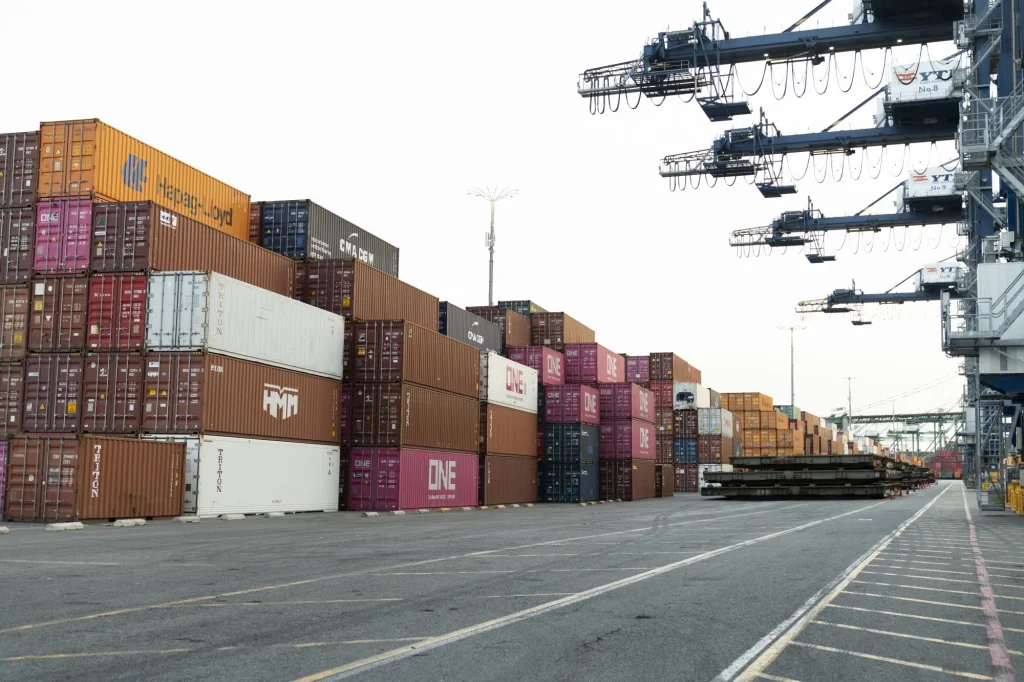[SINGAPORE] Sea cargo rates have surged, with those for the voyage from Shanghai to the US particularly steep, fuelled by pent-up demand and front-loading as shippers rush to beat the US-China trade truce expiry.
However, the uncertainty on where the market heads from here has been flagged by analysts, given that new capacity has been added to the US-bound trade lanes and whether the volume surge will sustain after the 90-day window.
The composite Drewry’s World Container Index, which tracks weighted average spot rates on eight east-west routes, rose 41 per cent to US$3,527 per 40-foot container this week, based on its latest reading published on Thursday (Jun 5) night.
The index showed that cargo rates have increased 70 per cent on average in the last four weeks.
Cargo rates from Shanghai to Los Angeles had the biggest jump of 57 per cent to US$5,876 per 40-foot container in the past week and 117 per cent since May 8 – shortly before the world’s top economy temporarily slashed tariffs against the Asian trade partner from 145 per cent to 30 per cent.
Cargo rates from Shanghai to New York spiked 39 per cent in the past week and 96 per cent in the past four weeks.
BT in your inbox

Start and end each day with the latest news stories and analyses delivered straight to your inbox.
Maritime and shipping research and consulting services provider Drewry attributed the surge in cargo rates to US President Donald Trump’s “pause” on import tariffs, which has led to a resumption of US-bound traffic after the initial collapse of transpacific volumes in April.
The spikes might have been for the China-US trade lanes, but shippers outside China are feeling the spillover effect.
Pelaris Cheng, managing director of Singapore-based freight forwarder Hermes Logistics, told The Business Times that not only have container rates from Singapore to the east and central of America doubled since end-May, space on board was also hard to come by.
She has since changed from containership to roll-on roll-off ships – known as RoRo for short – for her used-vehicle shipments, as RoRo charges are less volatile and have risen by less than containership rates.
In contrast, she was able to enjoy 40 to 50 per cent lower rates in March for container shipping as the demand from China – which competes for container space – had eased then.
Commenting on the cargo rates, container industry analyst at data provider Linerlytica Tan Hua Joo said there is little clarity on where the market heads from here as new capacity injections to the US starts to dampen rate momentum, while uncertainty remains over the sustainability of the volume surge after the tariff truce ends.
Drewry commented that the present sudden, short-term strengthening in supply-demand balance in global container shipping has reversed the trend of declining rates which started in January. However, it expects cargo demand to dip in the second half and cause spot rates to decline.
“The volatility and timing of rate changes will depend on the outcome of legal challenges to Trump’s tariffs and on capacity changes related to the introduction of the US penalties on Chinese ships, which are uncertain,” wrote Drewry in its weekly update.
The Shanghai Containerized Freight Index, which follows 13 export trades out of Shanghai, is expected to post higher rates on Friday as well. The index posted a 30.7 per cent rise last week over the preceding week.


